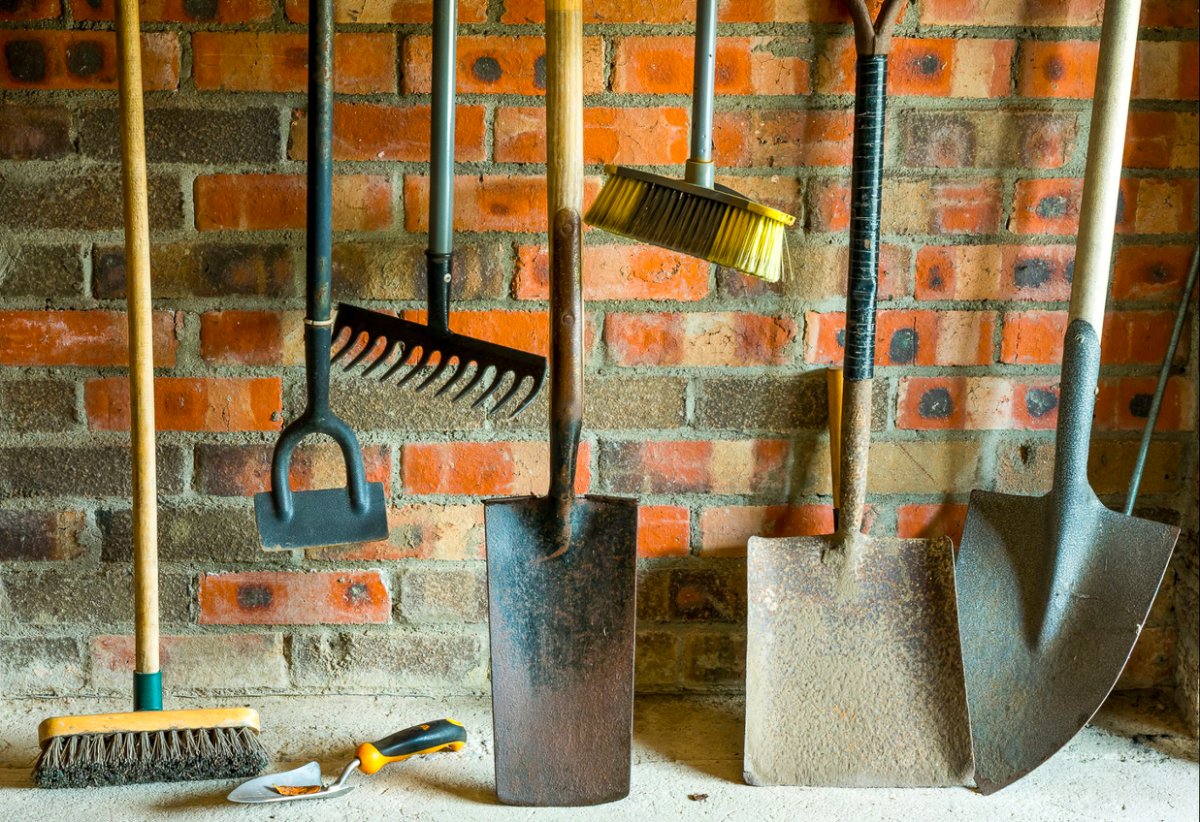

We may earn revenue from the products available on this page and participate in affiliate programs. Learn More ›
Shovels are designed for digging, scooping, pushing, and tossing, though not every shovel is equally suited to each of these tasks. For instance, a snow shovel isn’t the best option to dig up a flower bed, while a garden shovel is a poor choice for pushing around heavy snow. There are many different types of shovels to select from, and the best choice depends on the project or task.
The most common type of shovel is a pointed digging shovel, though round digging shovels and snow shovels are also very popular options. Typically, homeowners purchase snow shovels for winter maintenance and have one or more landscaping shovels on hand to deal with spring, summer, and fall yard work. Use this guide to learn more about the following 12 types of shovels and the various purposes behind the different designs, so you can choose the best shovel for the project.
1. Edging Shovel

The shaft of an edging shovel is generally longer than that of a standard digging shovel, so the user doesn’t need to bend down to scoop dirt or other material. Edging shovels have a small semicircular blade that is designed for cutting through weeds and tough grass turf. The user simply lines up the blade of the shovel where they intend to cut, then applies pressure with their foot to drive the blade through the material.
The metal shovel cuts cleanly through the foliage and the soil with little force required. By repeating this process along the sides of a path, the edges of a garden bed, or the borders of a driveway, the user can remove grass, weeds, and other plants that have started to grow over.
Best For: Edging shovels have small, tough blades for edging garden beds, pathways, and driveways.
Our Recommendation: Fiskars Steel Edger at Amazon for $32.99.
The durable steel cutting blade cuts cleanly through dense turf for edging walkways and gardens.
2. Flat Head Shovel
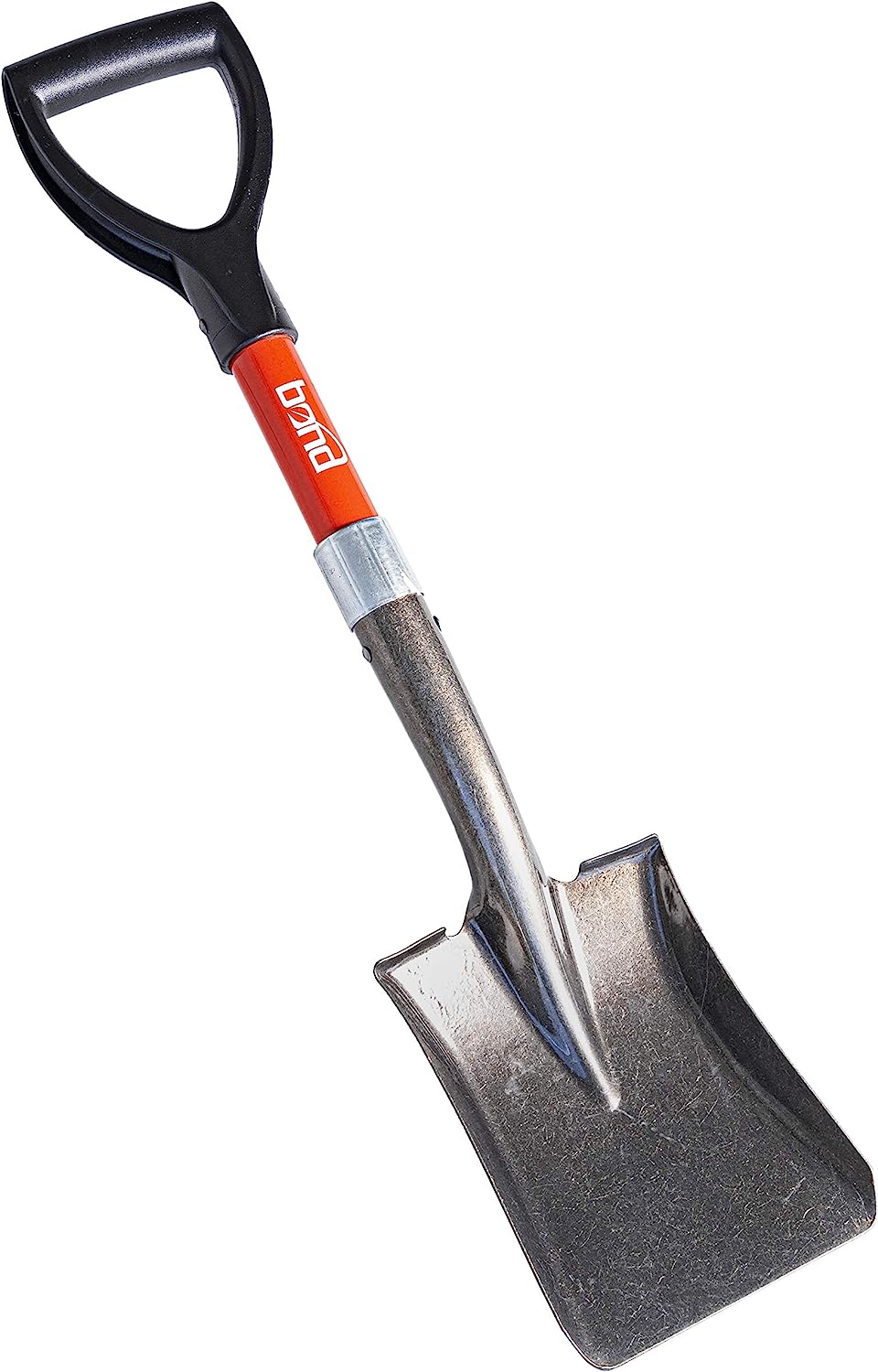
When it comes to choosing a shovel, it’s important to think about how the shovel will be used in order to select one that is suited to the task. Flat head shovels are commonly used in landscaping to scoop and carry a range of loose garden materials, including dirt, soil, mulch, and gravel.
The wide, slightly concave blade with upturned edges helps ensure that the user can carry a significant amount of material without worrying about the soil or gravel spilling off the sides. However, flat head shovels are not the best choice for digging or cutting, so users will want to stick to scooping, spreading, and moving garden materials when using this type of shovel.
Best For: The flat head of this shovel is great for scooping and carrying garden materials such as soil, mulch, or gravel.
Our Recommendation: Bond Manufacturing Square Head Shovel at Amazon for $28.69.
The broad, square-shaped blade of this flat head shovel is ideal for scooping dirt, spreading fertilizer, or loading gravel into a wheelbarrow.
3. Trenching Shovel
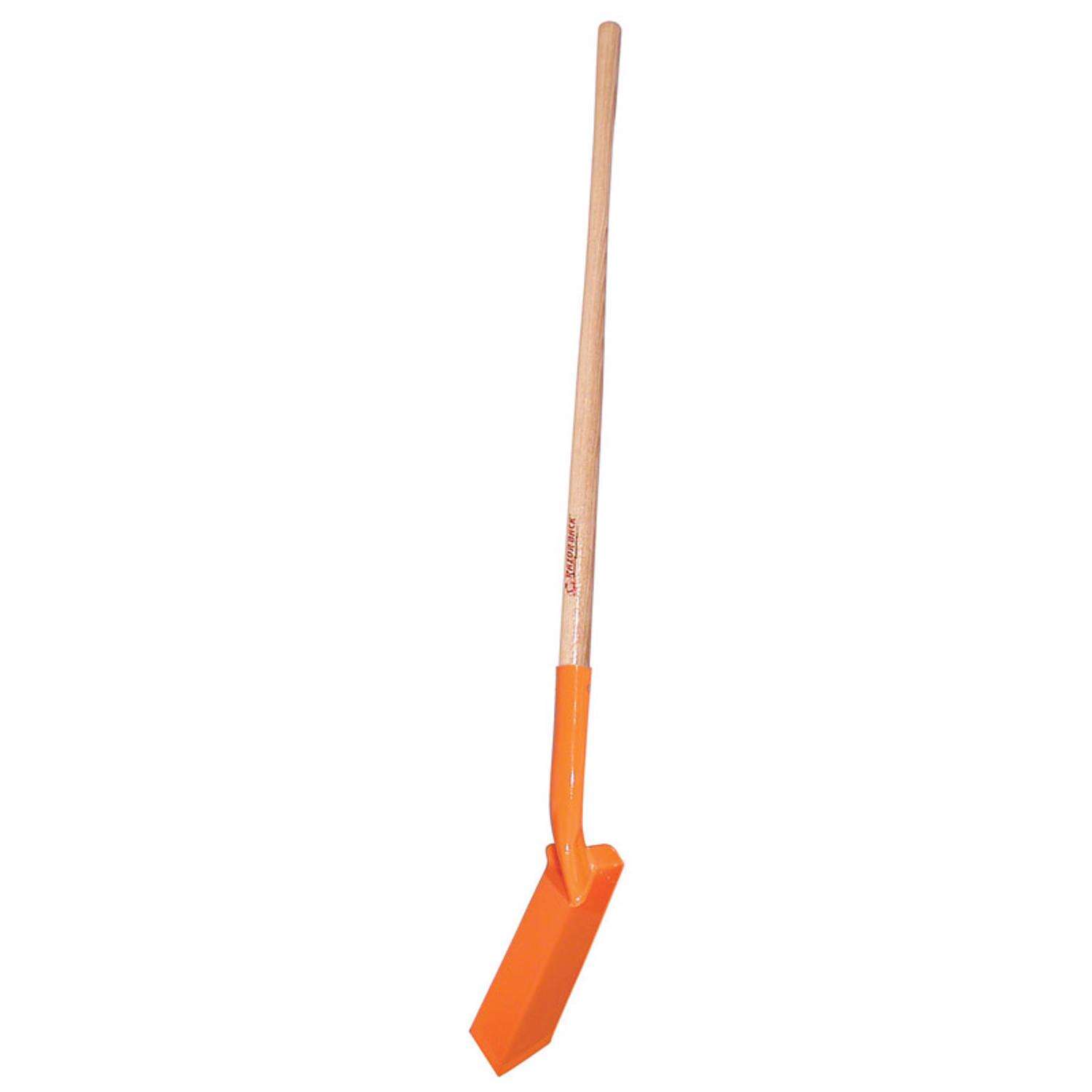
The terms “shovel” and “spade” are often used interchangeably because a spade is a type of shovel, but there is a slight distinction between the two terms. Shovels have wider blades that are better for moving material, while spades have narrow blades that are better for cutting and digging. Trenching shovels are typically considered a type of spade because they have long, narrow blades ideal for digging narrow trenches.
These shovels can also be used to remove soil or gravel from deep holes that have a diameter too small for digging shovels to access. It should be noted, however, that users will need to rely on their upper body and arm strength when digging with a trenching shovel because the blade is too narrow to properly drive the shovel with a foot.
Best For: Trenching shovels are ideal for digging shallow trenches and cleaning out deep, narrow trenches.
Our Recommendation: Razor-Back Trenching Shovel at Ace Hardware for $41.99.
The durable hardwood handle and narrow, tempered-steel blade help this shovel cut through tough soil with ease.
4. Post Hole Shovel
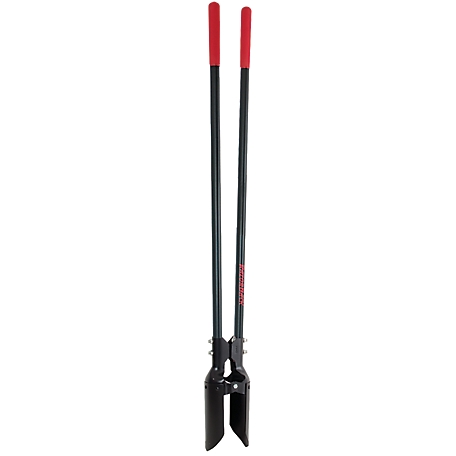
When you need to install an entire fence in a weekend, then it’s best to rent a motorized post hole digger, but if you are just replacing or installing a single post, then you can save money by investing in a post hole shovel. This type of shovel is designed with two handles and two blades. The user drives the blades into the soil, then uses the two handles to close the blades, allowing the shovel to grab loose material between the closed blades.
This mechanism helps dig and remove soil from narrow post holes, creating an even cylindrical hole in the ground for fence-post installation. Similar to trench shovels, post hole shovels can also be used to clean out shallow trenches or deep, narrow holes, and with better results than broad digging shovels.
Best For: These shovels use a pair of blades to dig and remove dirt from new post holes.
Our Recommendation: Razor-Back Post Hole Digger at Tractor Supply Co. for $64.99.
Use the fiberglass handles and dual high-carbon steel blades to dig deep post holes into compacted soil.
5. Tree-Planting Shovel
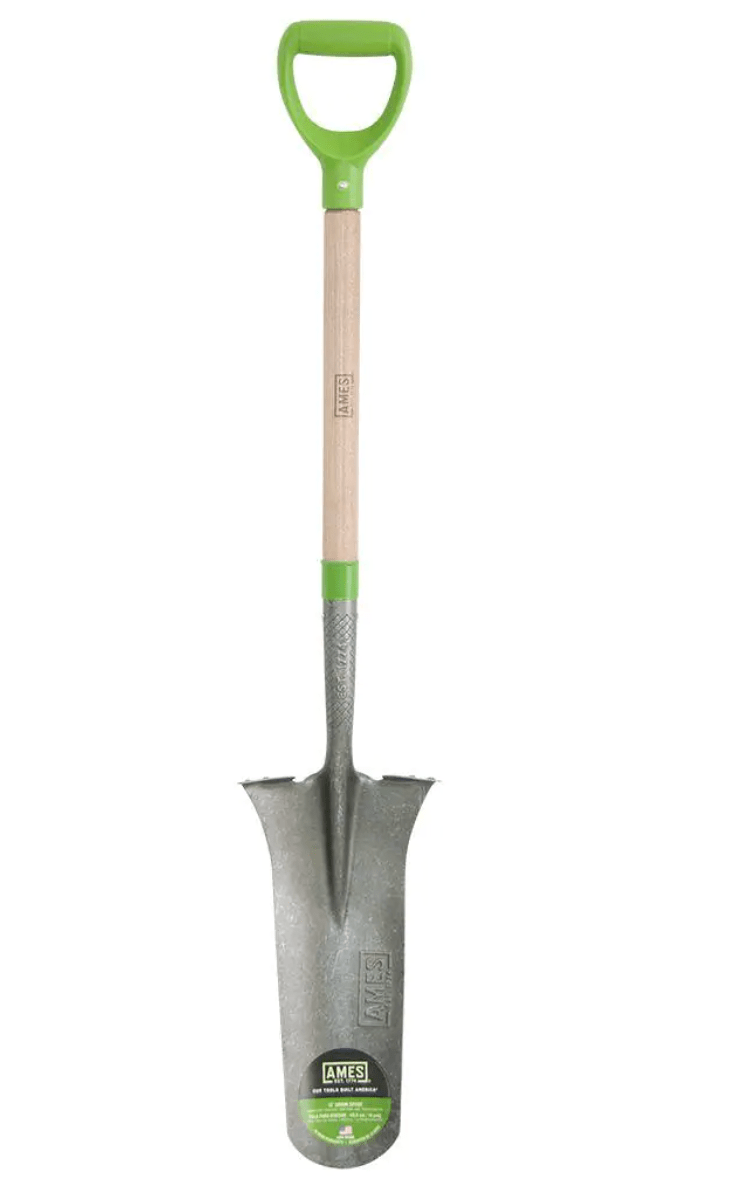
Tree-planting shovels or drain spades are specifically made for digging deep holes of various sizes for transplanting trees and other large plants. The shovels have a long blade, similar to trenching shovels, though tree-planting shovels have a wider blade that allows them to scoop and remove more material than a trenching shovel.
Tree-planting shovels can have either a curved or pointed tip, and the shaft of the shovel can vary in length. Longer shafts are typically better for digging on flat, even ground, while shorter shafts are suited for digging on hills or sloped ground. If you don’t have a trenching shovel on hand, a tree-planting shovel can also be used to make shallow trenches for flower beds.
Best For: As the name implies, tree-planting shovels are designed for digging various-sized holes to plant trees.
Our Recommendation: Ames D-Handle Drain Spade at Walmart for $42.27.
This tree-planting shovel is designed with a wide foot plate for improved digging comfort and control, and also for enhanced downward force.
6. Snow Shovel
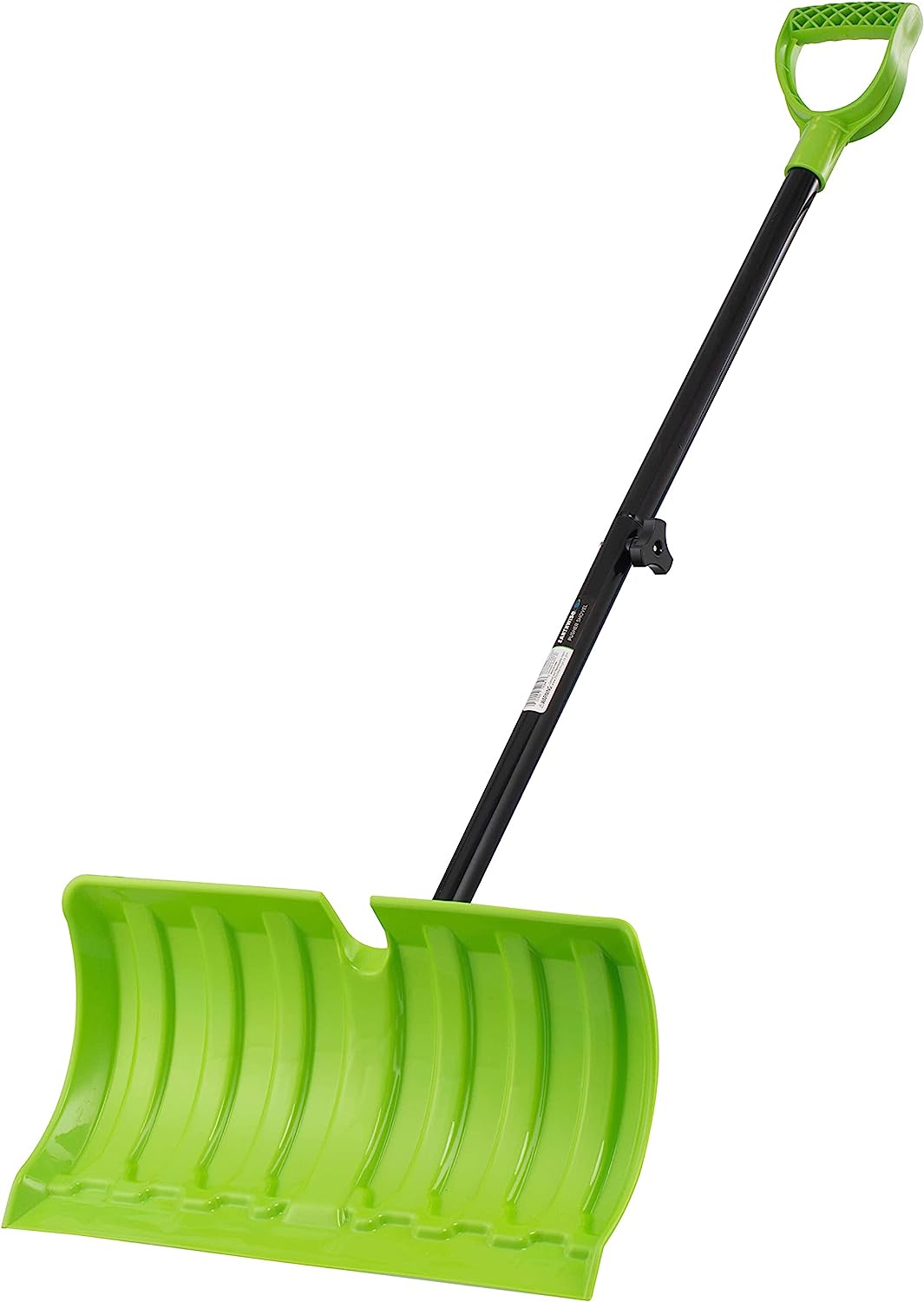
Many shovels are used during warmer weather to dig into the ground, scoop dirt, or cut through existing turf, but the most popular shovel during the winter months is the snow shovel. These shovels have a forward-facing metal or plastic blade shaped like a vertically curved rectangle. The broad blade is designed to clear snow off of driveways, walkways, decks, porches, and paths.
Snow shovels are available with a range of shaft lengths and blade sizes. Some models may even have curved blades to help relieve strain on the user’s back while pushing, lifting, or tossing snow. Keep in mind that while plastic is OK for snow shovels, steel or stainless steel are the best options for most landscaping shovels.
Best For: Use a snow shovel to push, scoop, and toss snow to clear paths and driveways.
Our Recommendation: Earthwise Snow Shovel at Amazon for $38.20.
The lightweight steel shaft reduces user fatigue without sacrificing durability, making it easier for plowing snow.
7. Pointed Shovel
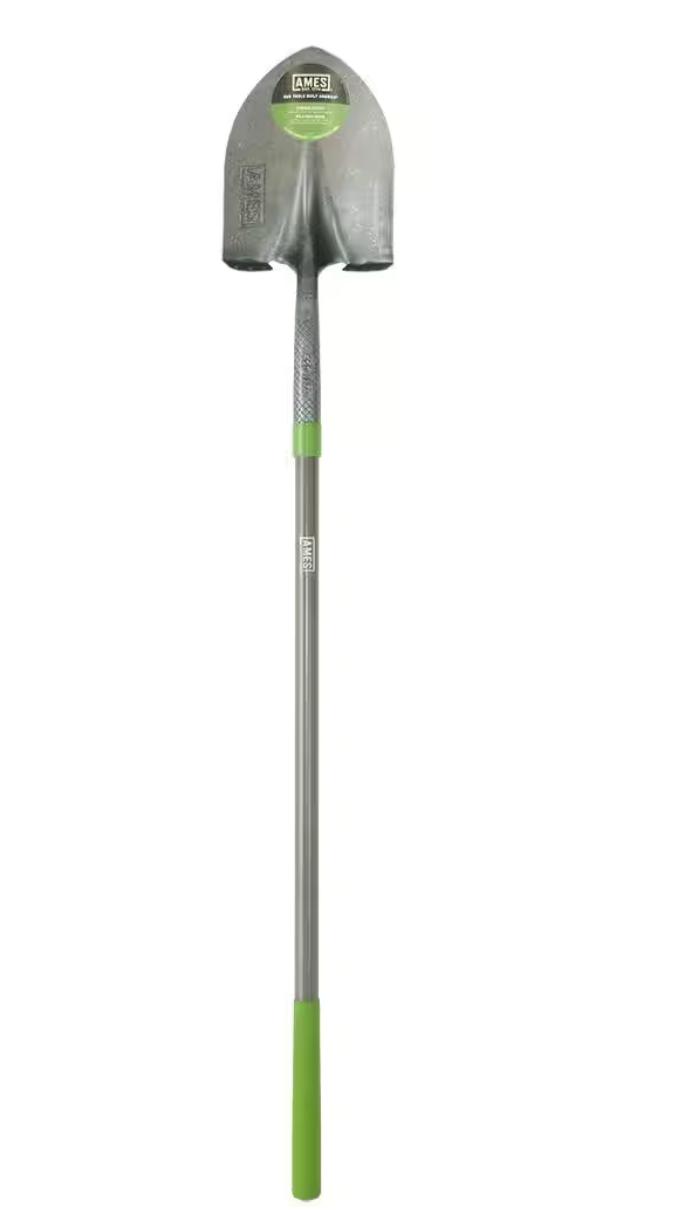
There are two main types of digging shovels commonly used for landscaping and DIY yard work, including pointed shovels and round shovels. Pointed shovels have a blade that ends in a sharp point, making them well suited for digging through tough, compacted soil. These shovels can also be used to dig into rocky soil, using the tip of the shovel to cut through the dense material.
Pointed shovels have a broad blade that can scoop, carry, and toss dirt, so you can dig into loose soil and remove material in one motion. For harder or denser soil, users can drive the blade into the ground using their foot because of the shovel’s wide foot plate and long wood or metal shaft. It should also be mentioned that pointed shovels are sometimes referred to as round point shovels.
Best For: This type of digging shovel is ideal for dealing with tough, compacted, or even rocky soil.
Our Recommendation: Ames Pointed Digging Shovel at The Home Depot for $23.74.
Use the durable tempered-steel blade and rounded point to cut through dense soil and scoop loose material.
8. Round Shovel
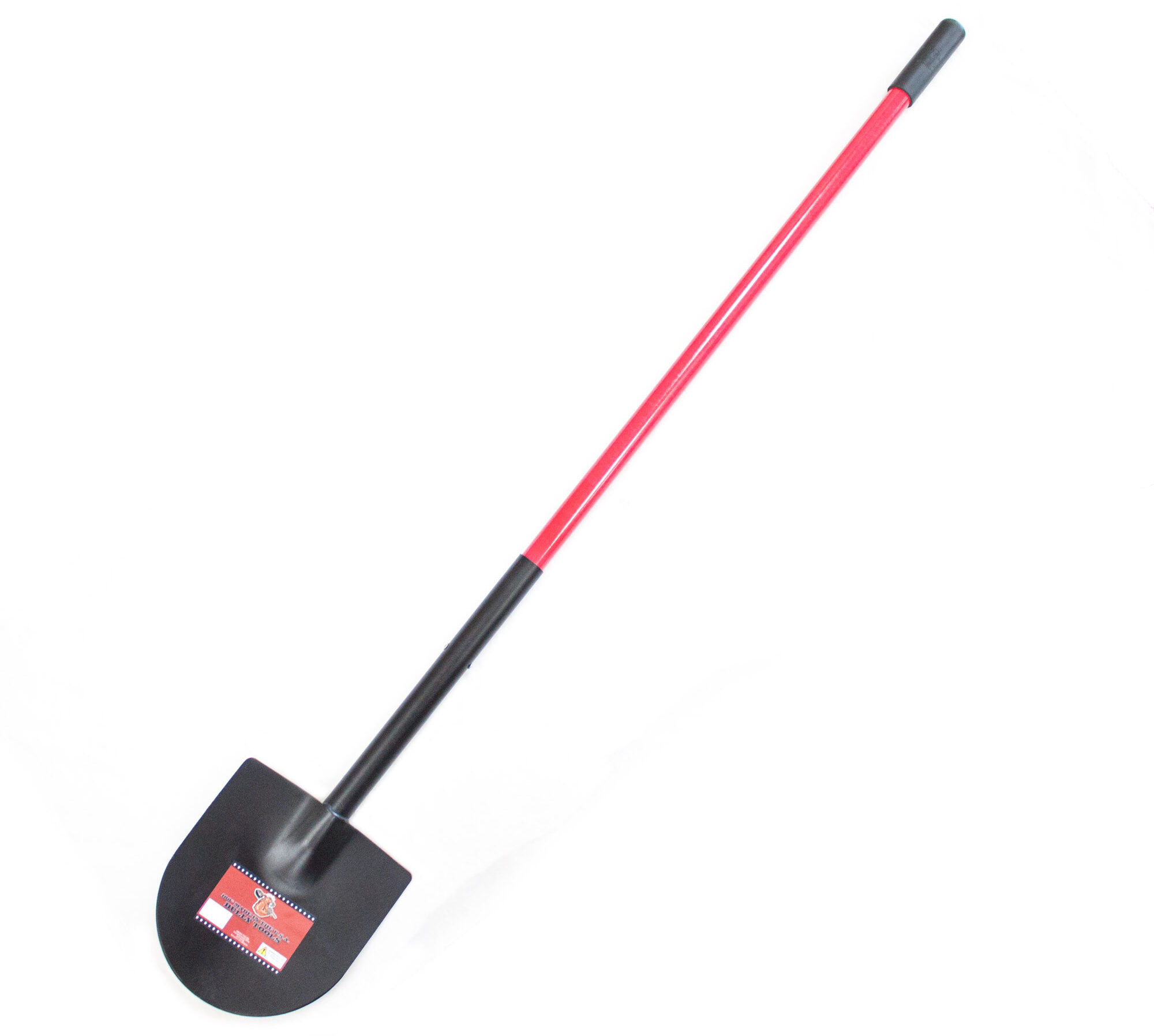
Another type of digging shovel is the round shovel or caprock shovel. These shovels have a longer shaft than pointed shovels, and the blade ends in a smooth, rounded curve instead of a sharp point. This means that round shovels are not well suited for digging into tough, dense, or rocky soil. However, the round blade is ideal for removing plants without damaging the roots, allowing users to transplant healthy plants to a different area in the yard.
The round shovel blade can also be used to break up clay, thin rock, and other dense material by using the user’s weight to drive through the tough substance. Alternatively, you can use a round shovel to dig holes in soft soil in order to prepare for new plants or small trees.
Best For: The curved shape is well suited to transplanting plants and digging holes in soft soil for new plants or trees.
Our Recommendation: Bully Tools Caprock Shovel at Northern Tool + Equipment for $57.74.
The long handle improves leverage to help reduce user fatigue while digging or breaking up clay.
9. Folding Shovel
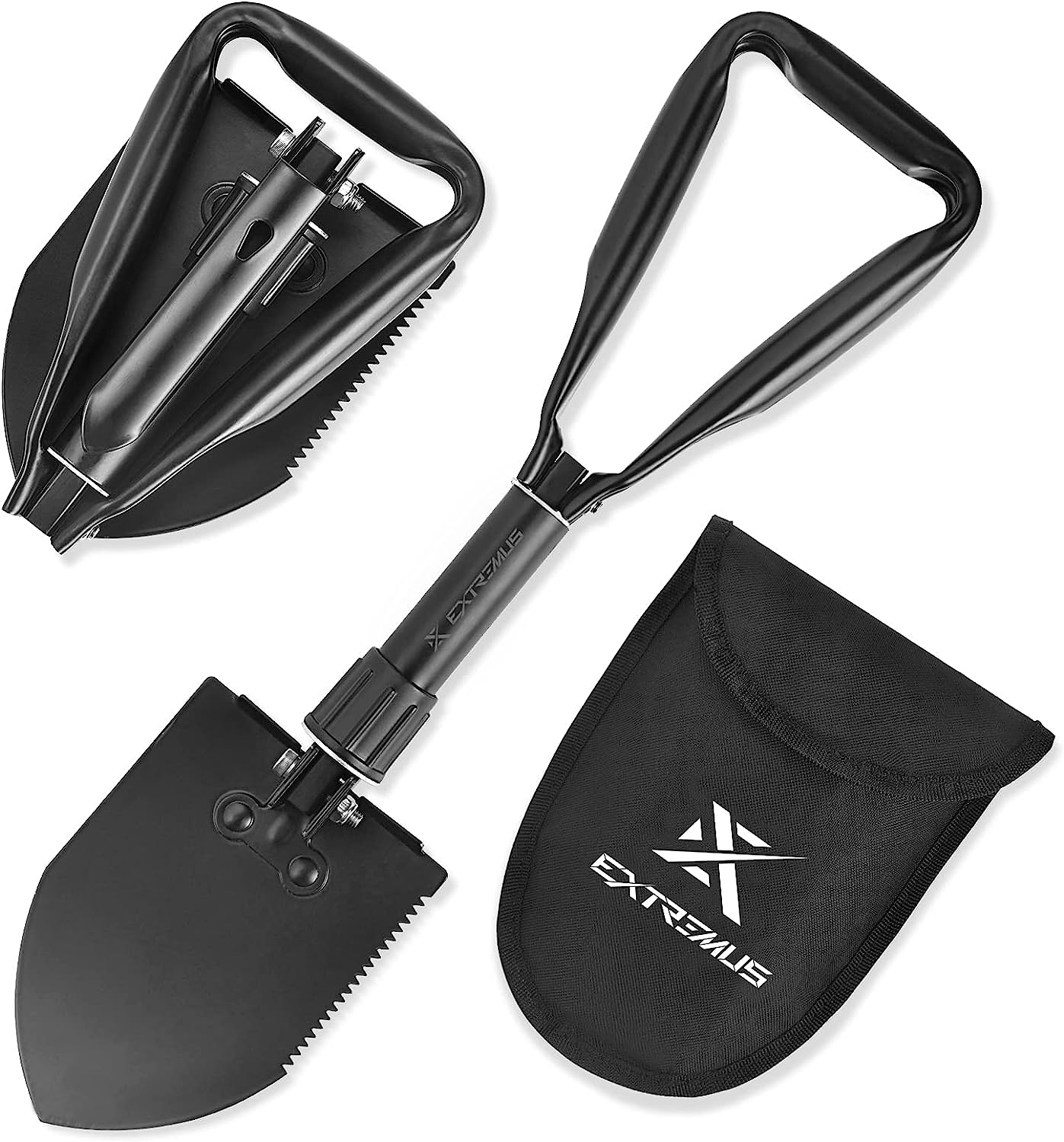
The main purpose of a folding shovel is portability. By folding the shovel in half or sometimes even in thirds, the user can pack the tool into a vehicle or load it into a backpack for easy carrying. Folding shovels are excellent tools to have while hiking or camping because the shovel can quickly dig holes for fire pits and scoop dirt to douse the coals of a dying fire.
Add a folding shovel to the car or truck to help in the event of a roadside emergency. The shovel can dig a small hole where road flares can be safely placed, ensuring that your vehicle stands out, even in poor visibility. Just keep in mind that the portable design reduces the durability of the shovel, so these small shovels may wear out more quickly than standard shovels.
Best For: These small shovels are designed for portability, making them a great choice for camping trips or to have in the car in case of emergencies.
Our Recommendation: Extremus Folding Camping Shovel at Amazon for $15.89.
Fold the shovel in half to keep it safe in a backpack at the campsite or pack it into the car for use in emergencies.
10. Handheld Shovel
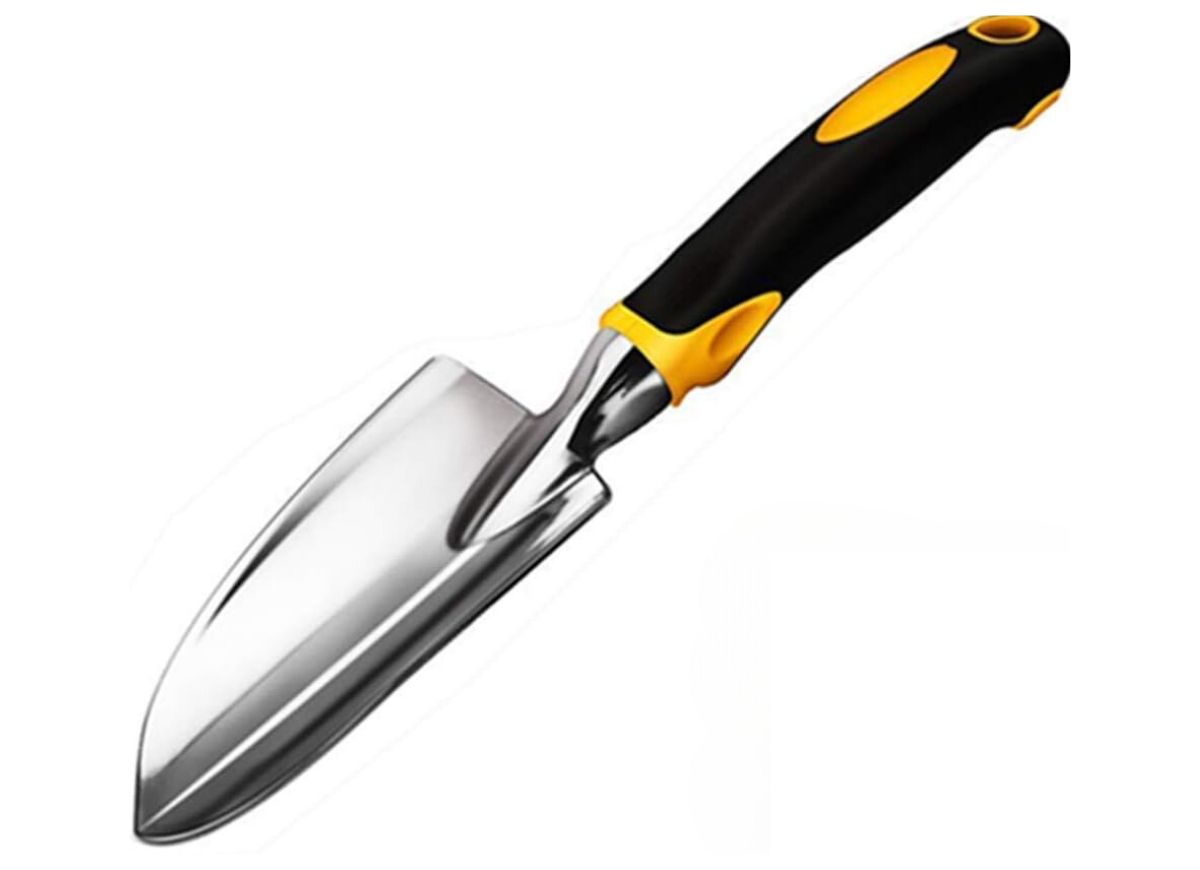
A handheld shovel can also be referred to as a garden shovel, garden trowel, hand shovel, garden spade, or hand trowel. This type of shovel has a small blade and a very short shaft that is designed to be gripped in one hand. Use handheld shovels to dig up weeds, transplant seedlings, or dig holes for new plants. Typically, handheld shovels have relatively narrow blades that are about 6 inches in length. The blades can have rounded or pointed tips, depending on the intended purpose. Opt for a pointed blade if you will be digging through tough dirt, or go with a rounded blade for soft garden soil.
Best For: Handheld shovels have small blades and short shafts that are made for digging up weeds, removing plants, and digging shallow holes for new plants.
Our Recommendation: Sinoer Shovel Trowel at Amazon for $10.99.
The soft, rubberized nonslip handle improves user comfort and control while transplanting, weeding, or digging.
11. Root Shovel

A root shovel is generally considered one of the sharpest shovels because it is designed to chop and slice through tough plant and tree roots. This type of shovel has an elongated triangular blade that ends in either a sharpened tip, a narrow flattened edge, or an inverted V-shaped cutting tip. The shaft of the shovel ranges in size, and the edges of the blade are typically serrated, allowing the user to saw through difficult tree roots.
Use a root shovel to remove unwanted plants and small trees from the lawn or garden. It can also be used to cut through buried tree roots that may be obstructing a backyard project or preventing you from planting new bushes or trees in the yard.
Best For: The triangular blade and often-serrated edges of a root shovel are designed for cutting through tough plant and tree roots.
Our Recommendation: Radius Garden Root Slayer Shovel at Amazon for $49.99.
Make quick work of plant and tree roots with the serrated edges and V-shaped carbon steel cutting tip of this Radius Garden root shovel.
12. Power Snow Shovel
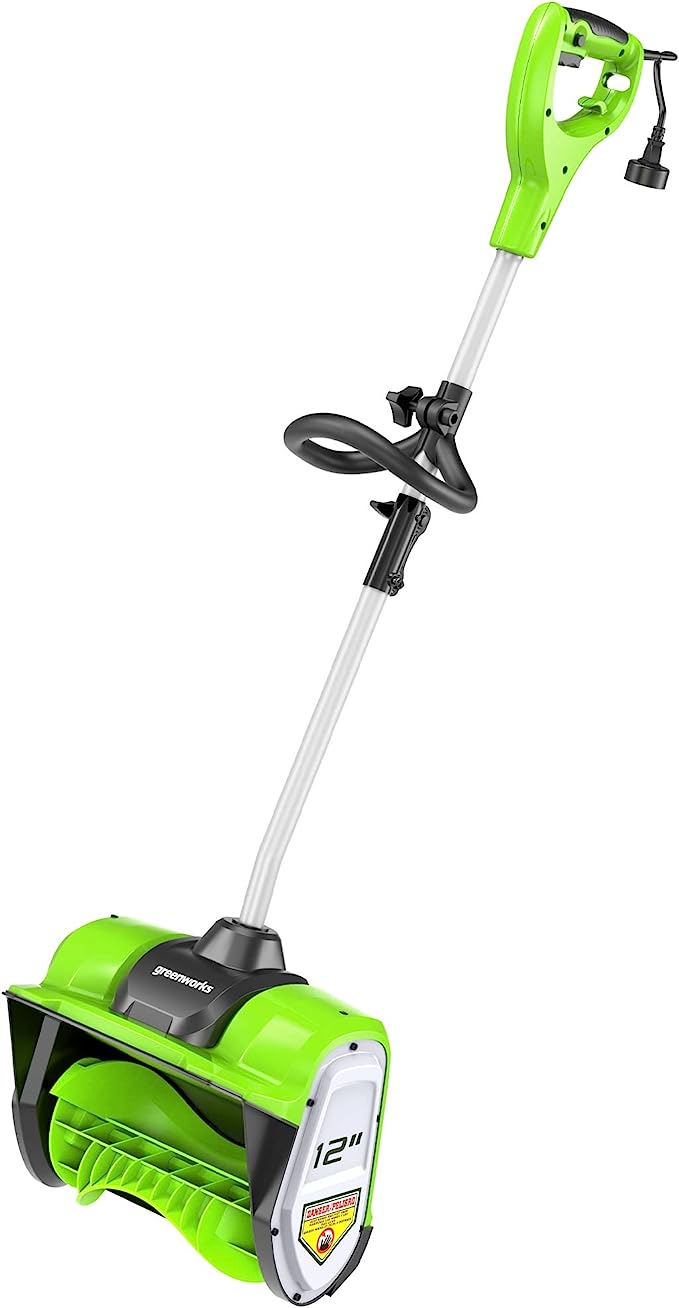
Most shovels are considered hand tools that rely on the user’s physical power to drive the blade of the shovel into the ground or through the snow. However, a power shovel uses an internal motor to rotate the blades, allowing the power shovel to quickly scoop and discharge snow. Power snow shovels fall in between a standard manual snow shovel and a full-size snow blower in terms of power and versatility.
Depending on the model, some power shovels can also be used to move loose soil, though it’s important to verify that this is the intended purpose before trying to drive a snow shovel through a pile of dirt. Use power snow shovels in narrow spaces where a full-size snow blower won’t fit, so you don’t have to force a manual shovel through the snow and ice.
Best For: Powered blades rapidly scoop and remove snow to make quick work of clearing paths and driveways.
Our Recommendation: Greenworks Electric Snow Shovel at Amazon for $93.20.
Clear up to 300 pounds of snow per minute with this 8-amp electric snow shovel that discharges the snow at a distance of up to 20 feet.
The prices listed here are accurate as of publication on 7/20/23.
